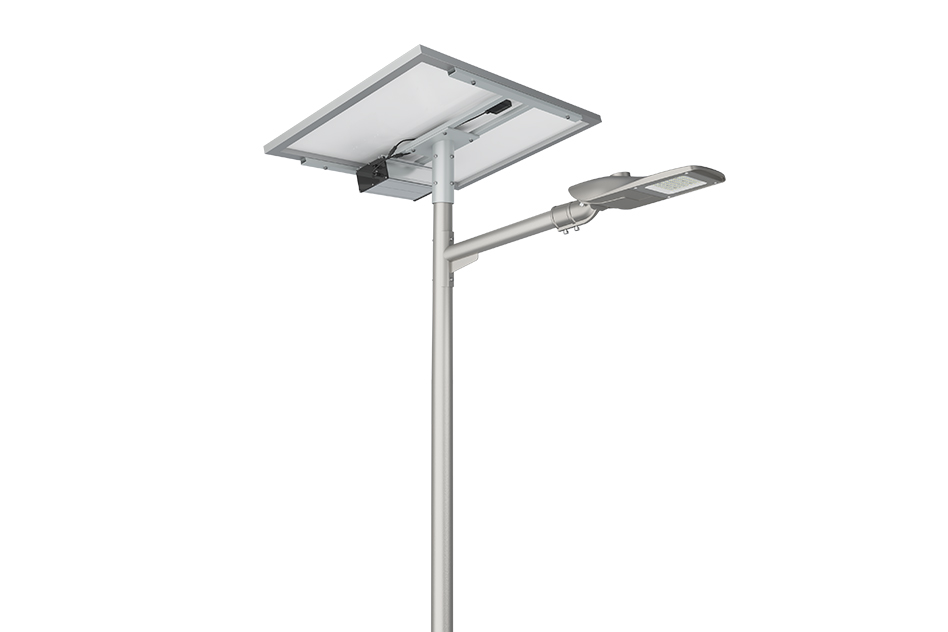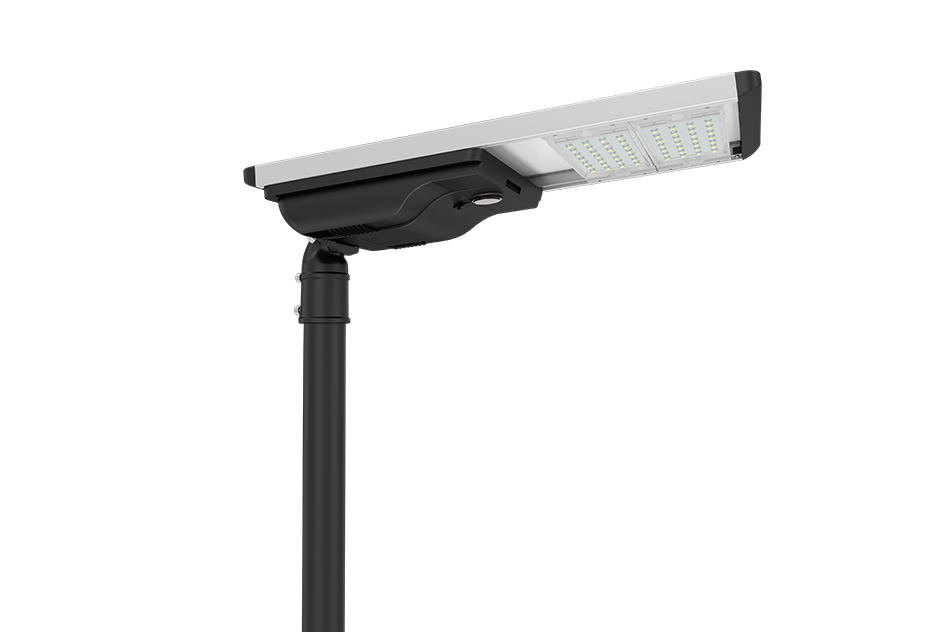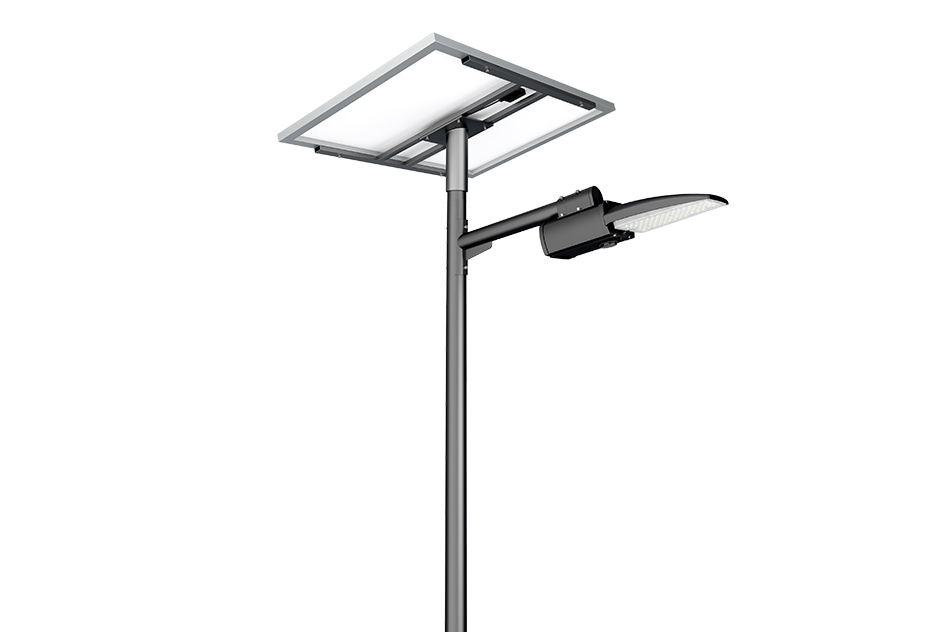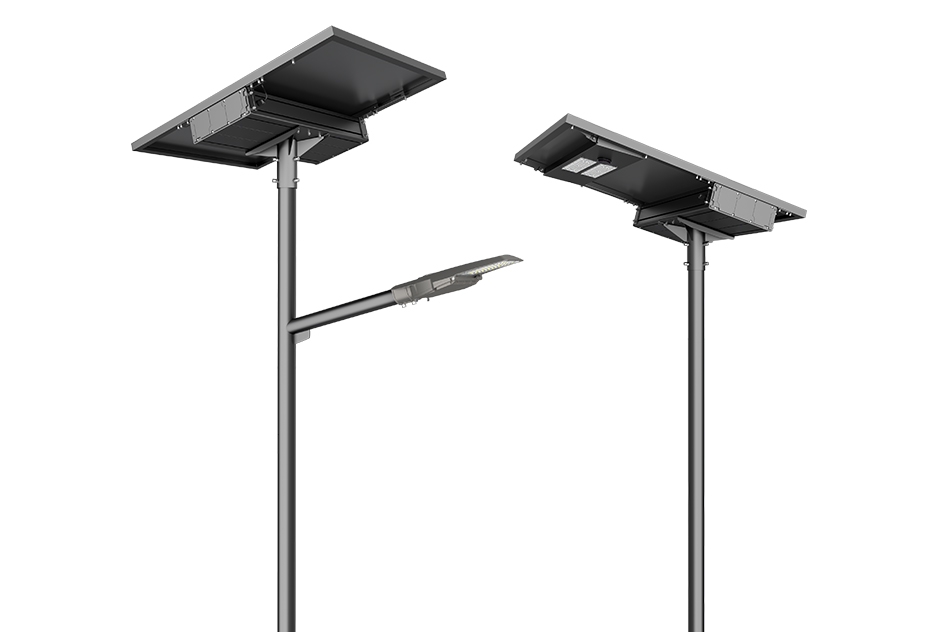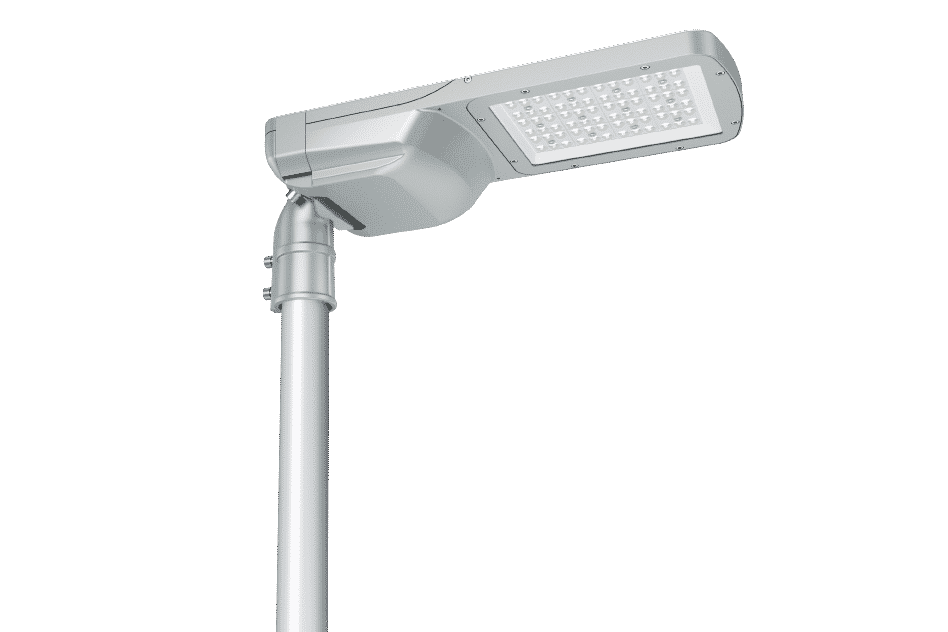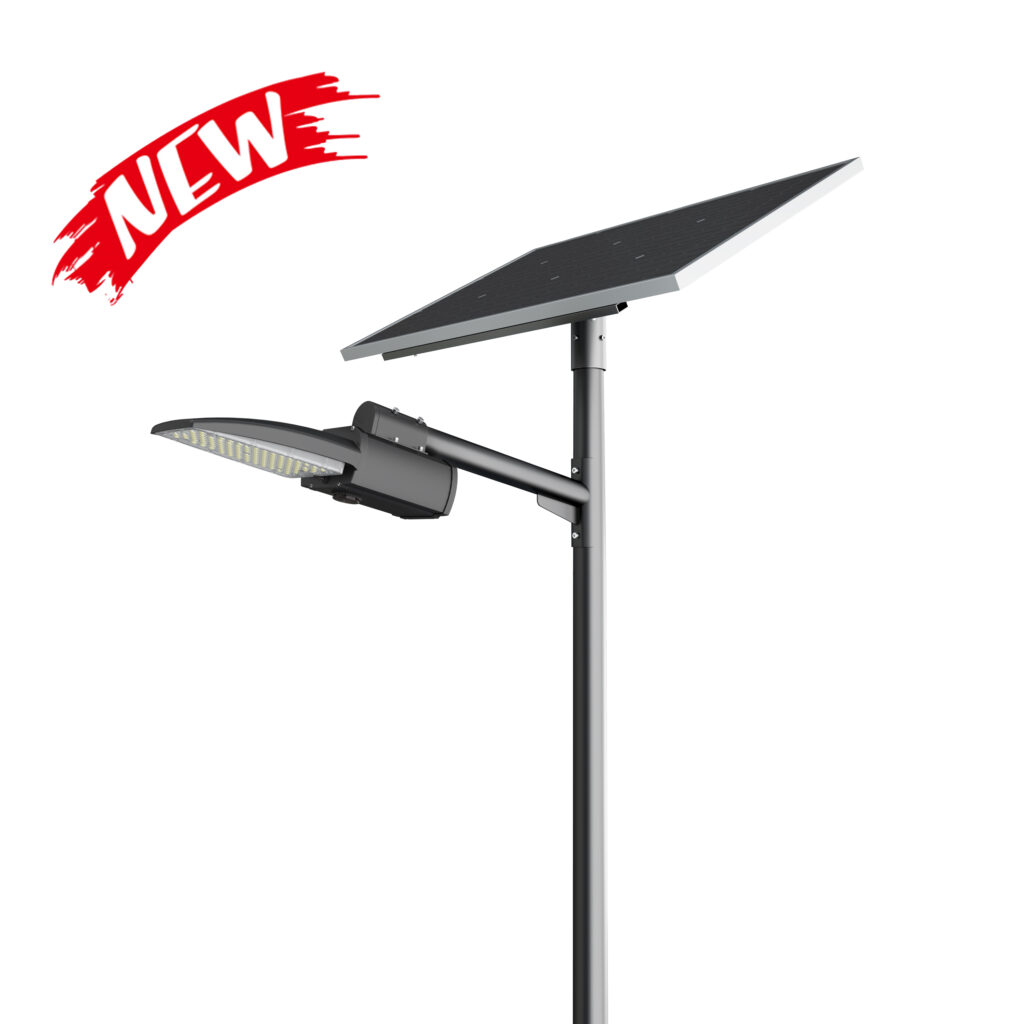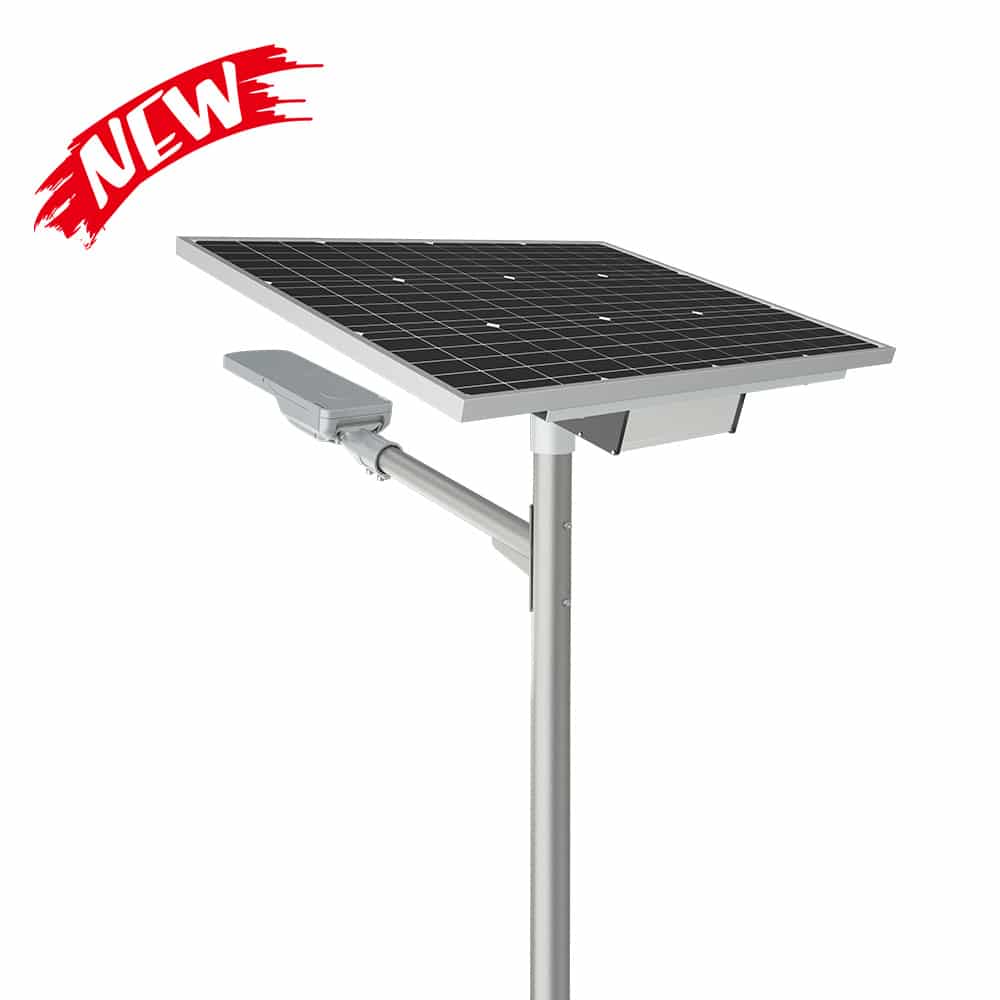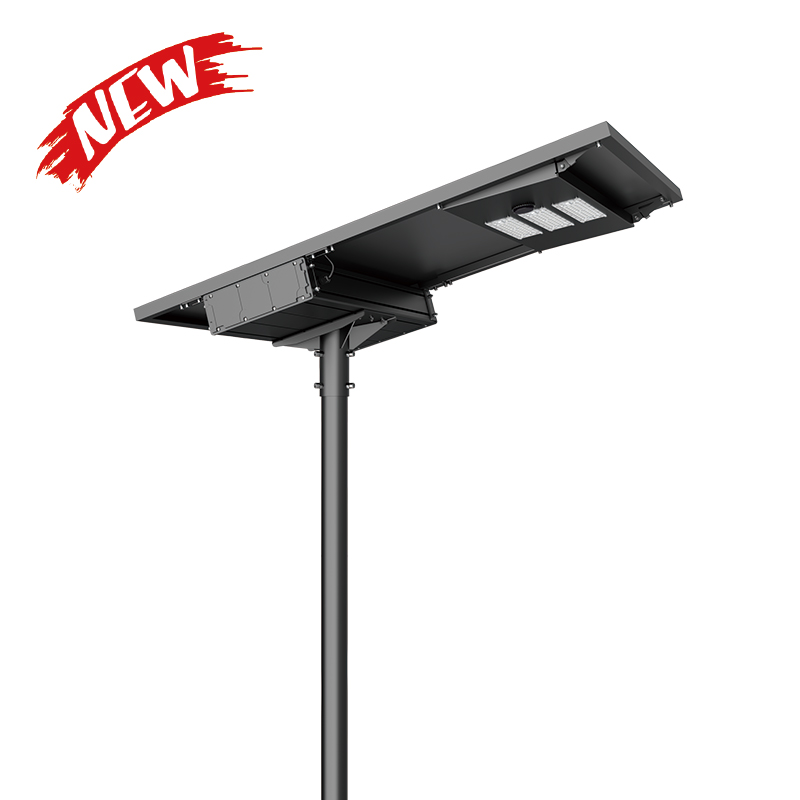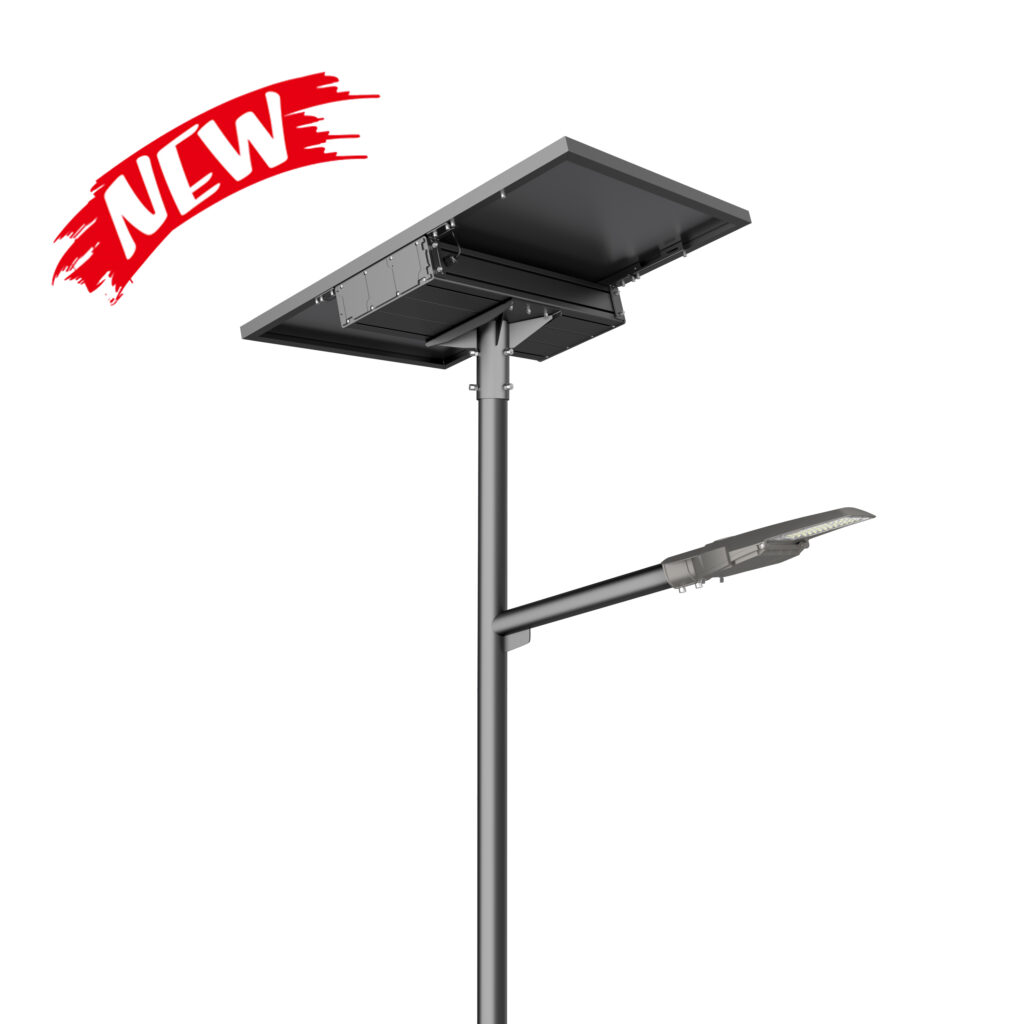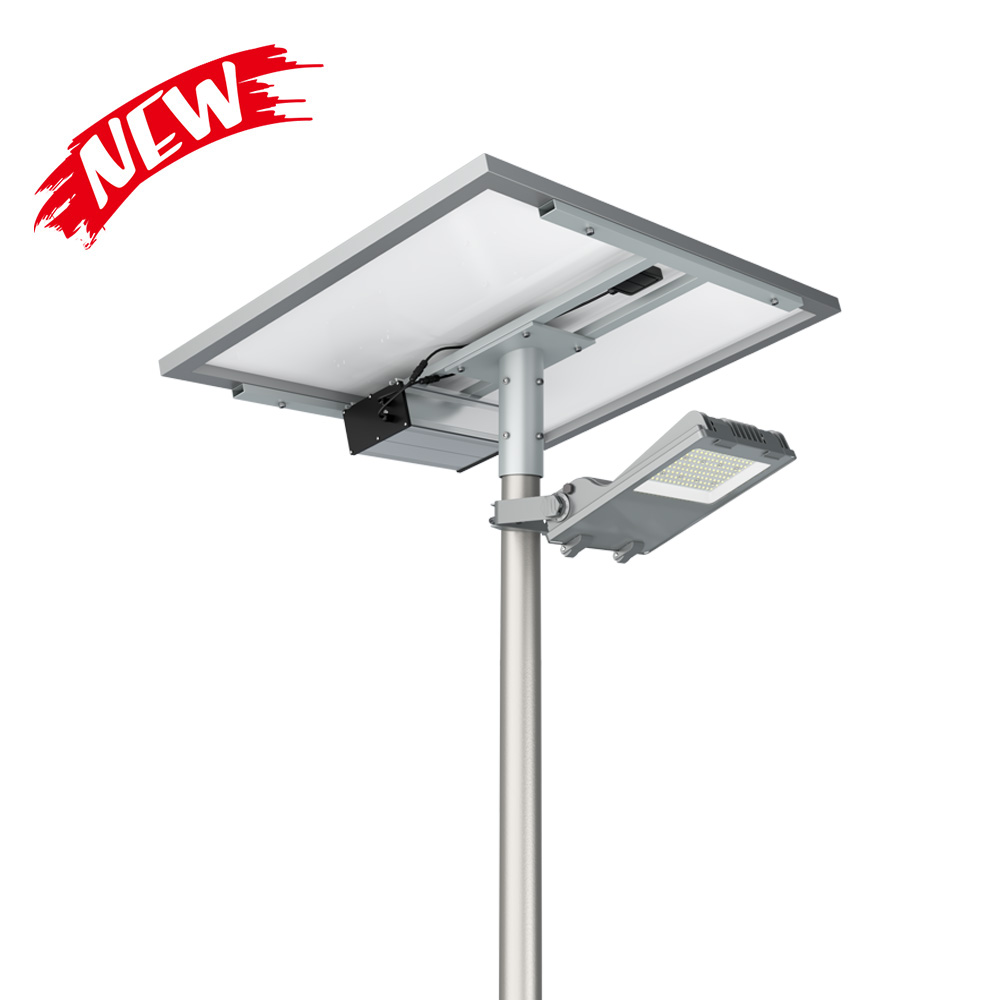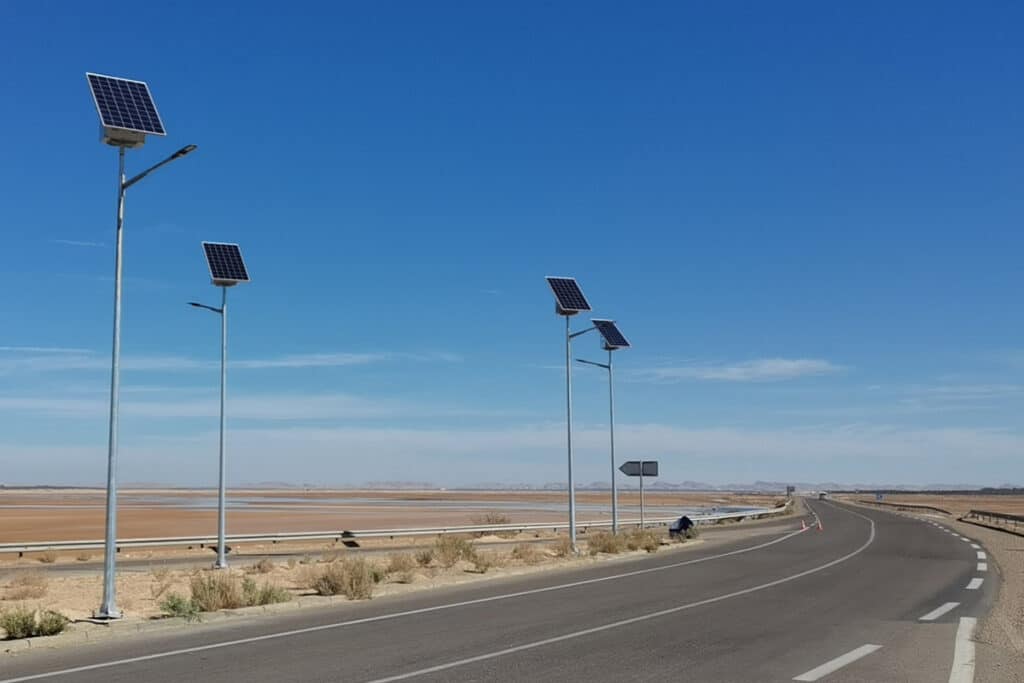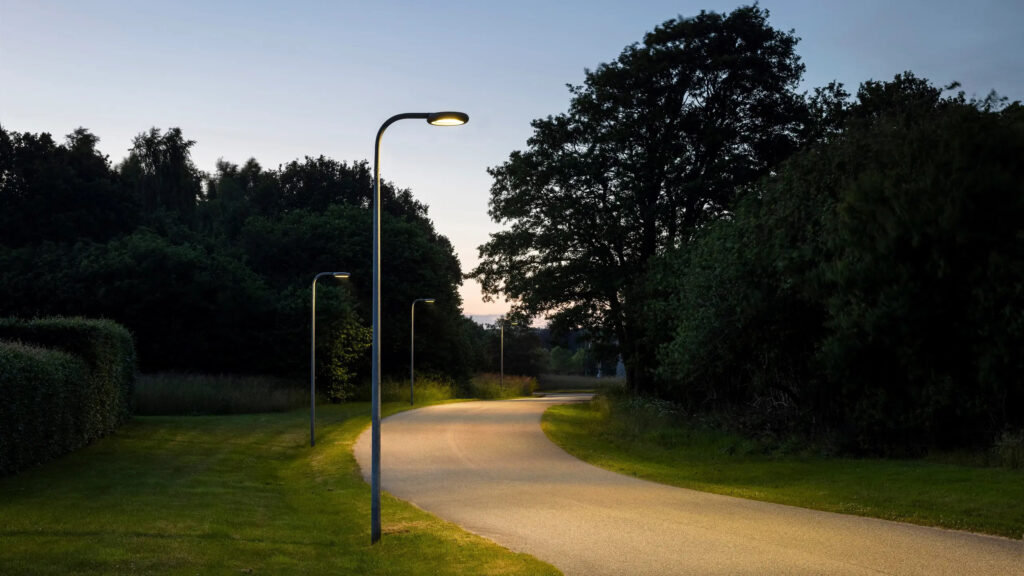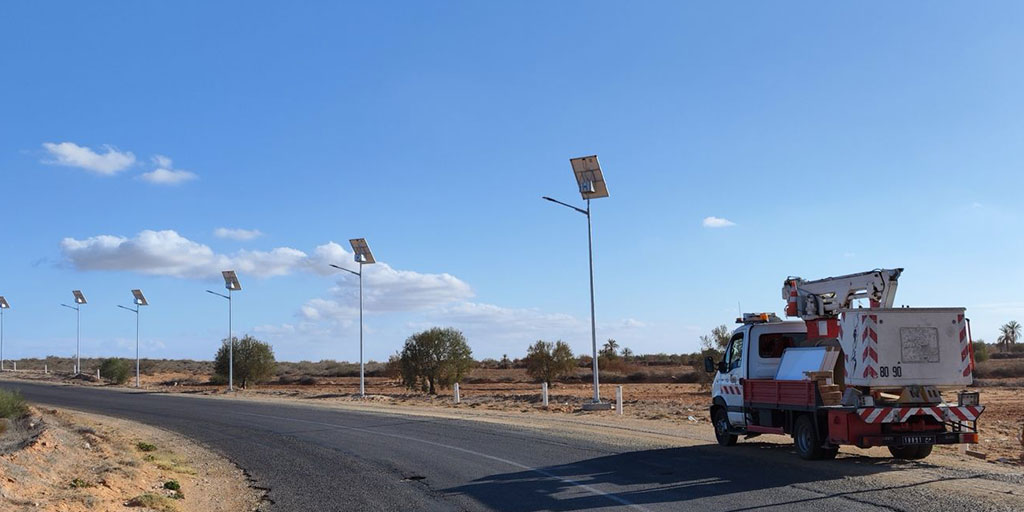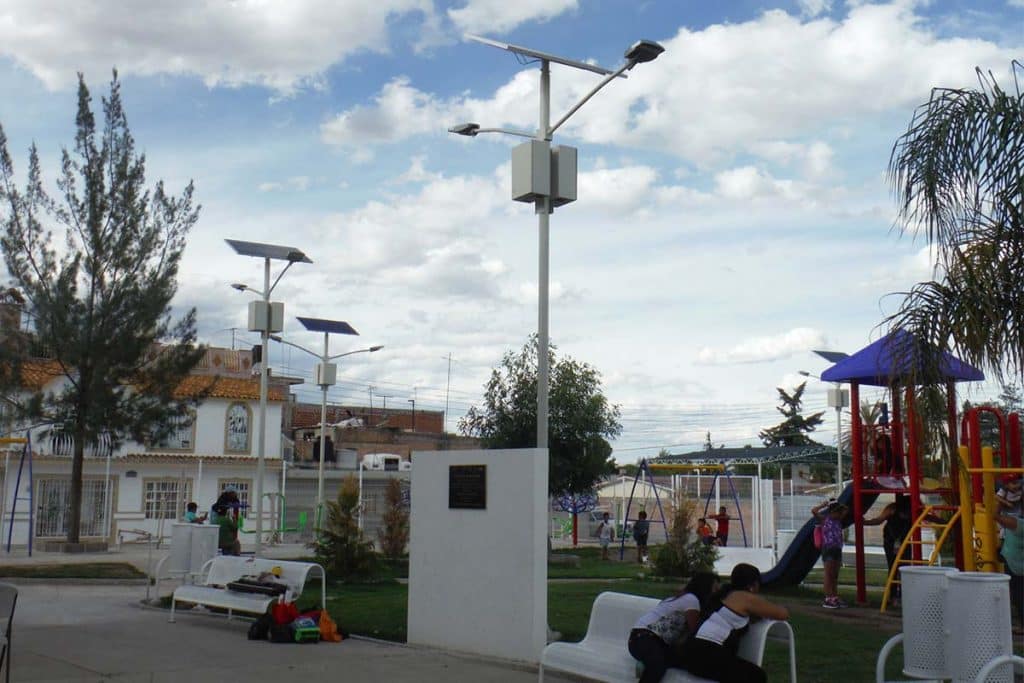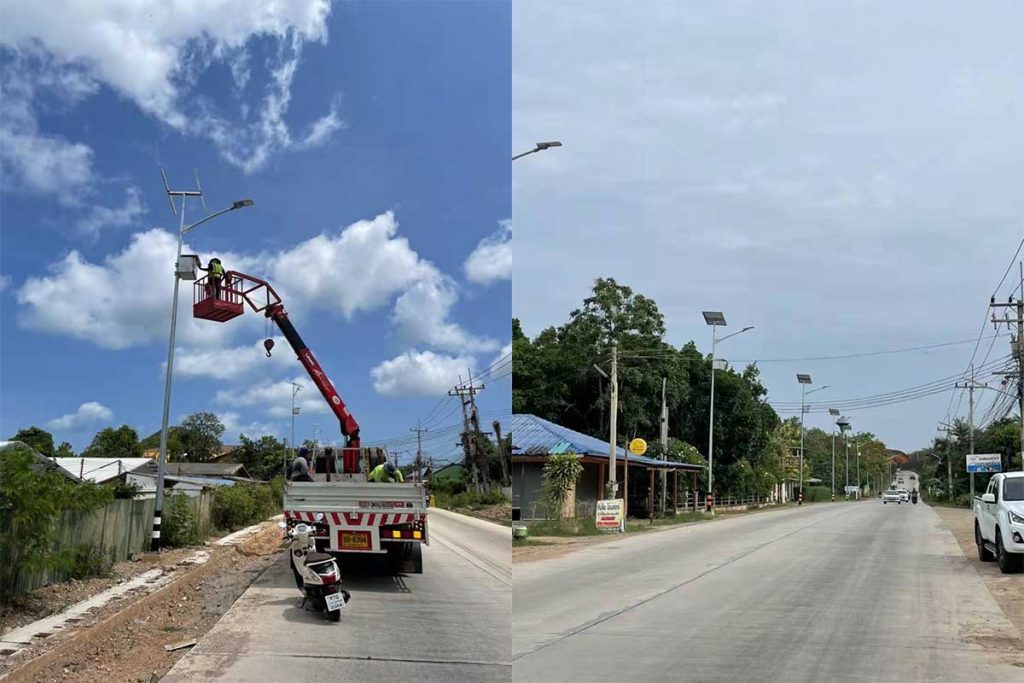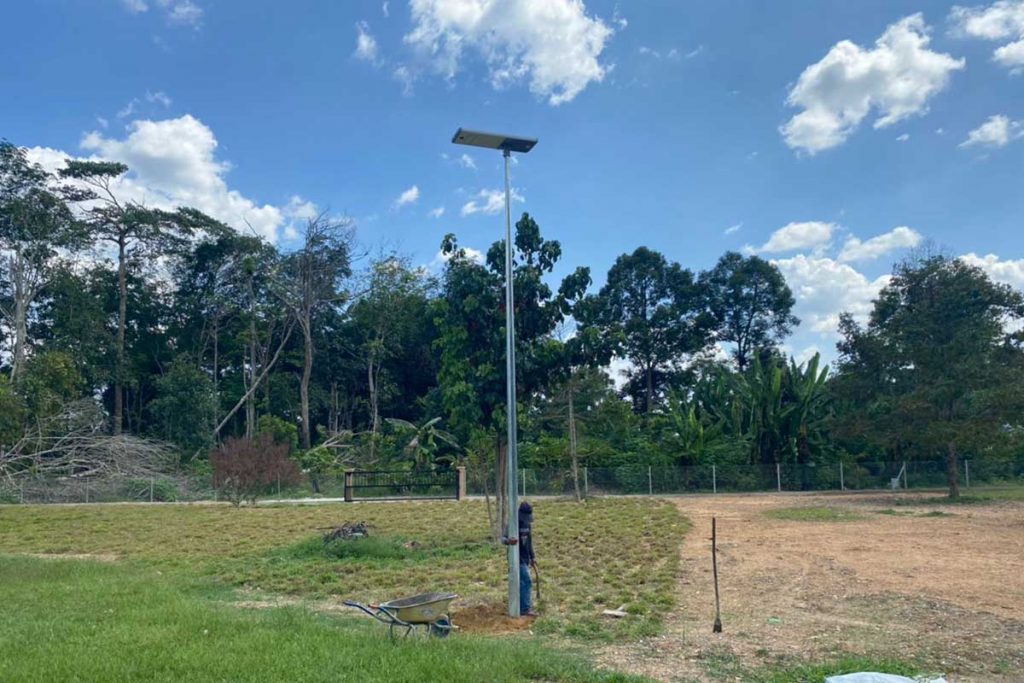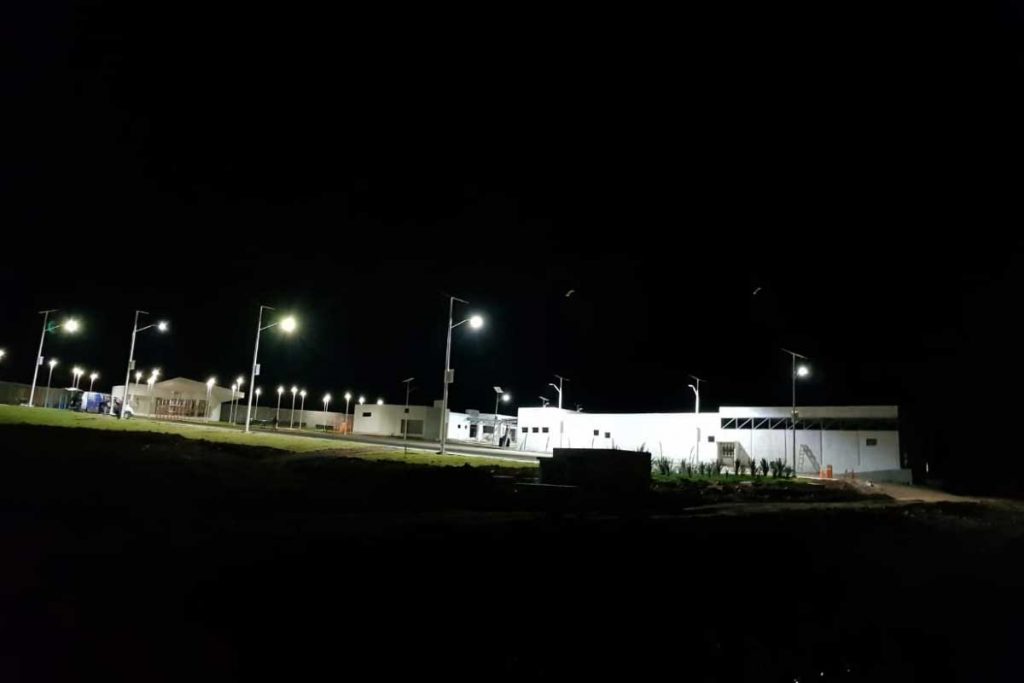Solar street light with motion sensor or passive infrared sensor
Solar street light with motion sensor or passive infrared sensor
Introduction
Solar street lights are a sustainable and energy-efficient lighting solution for outdoor environments. To further optimize their functionality and improve energy efficiency, installing microwave or passive infrared (PIR) motion sensors is a good choice. These devices can automatically switch on or off or adjust the brightness based on motion and radiation detection, saving energy and adding convenience. In this blog post, we will focus on what motion/infrared sensors are, their differences, and what advantages they have. Of course, they also have their disadvantages, such as short sensing distance, false sensing, and delays. Therefore, we will delve into how to better integrate motion/infrared sensors into solar street lights, among which timer dimming (What’s timer dimming?) is a great option. So, let’s get into the main text to understand all the content so that you can better choose solar street light with motion sensor or passive infrared sensors and play their role.
What‘s solar street light?
The main components of solar street lights are solar panels, rechargeable batteries, LED lights and controllers. Smart sensors are usually installed to make the performance better. Solar panels are used to convert solar energy into electrical energy, and rechargeable batteries store the electrical energy and use it for LED lamps at night. LED street lights (ZGSM LED street lights) convert electrical energy into light energy to provide lighting for the road. The controller controls the flow of current. During the day, the current flows from the solar panel to the battery through the controller, and at night, the current flows from the battery to the LED lamp through the controller, which is similar to a control center. In the solar street light system, the battery is an important factor affecting the cost of the entire system. If a large-capacity battery (More about the battery of solar street light) is used, although it can ensure that the lamp works normally on cloudy days or long nights, it will increase the overall cost a lot. However, there is now a solution to this problem. Modern solar street lights are increasingly using motion sensor and infrared sensors to reduce energy consumption. Microwave sensors can detect moving objects within a certain range and only make the solar street light with motion sensor to be brighter when needed; passive infrared sensors can identify the heat signals of pedestrians and vehicles, so that the lamps light up when they need to provide them with lighting. This method of adjusting lamp output in real time reduces the reliance on large batteries and can effectively reduce the cost of solar lighting systems.
Motion sensor vs passive infrared sensor
What is a motion sensor (microwave sensor)?
A motion sensor uses microwave radiation, which is an electromagnetic wave that can penetrate certain materials (such as glass, wood or plastic). It is a detection device that uses microwaves to sense motion in a corresponding area. It works by continuously emitting microwave signals and measuring the reflections from objects and people in its detection area. It works based on the Doppler effect, which is the frequency of the wave changes when the source or observer moves. When the object is stationary, the wave emitted by the microwave sensor (the transmitted wave) has the same frequency as the reflected wave. However, when the object moves, the frequency of the reflected wave changes depending on the speed and direction of the object. The microwave sensor can detect this frequency change, and then it will send a command (such as a 0-10V dimming signal or a TTL level signal) to the LED driver (More about LED driver) or solar controller, which will eventually trigger the switch or dimming of solar street light with motion sensor.

What is a passive infrared sensor (PIR sensor)?
PIR sensors use infrared radiation to sense the presence or absence of objects within their sensing range by detecting infrared radiation. Its working principle is different from the active detection of microwave sensors, but passive detection, that is, the PIR sensor does not send any signal, but responds to the changes in infrared energy emitted by the object. PIR sensors consist of a pyroelectric element and a lens. Pyroelectric sensors are materials that generate tiny electric charges when exposed to heat. The lens is responsible for focusing infrared radiation onto the sensor, which affects the sensor’s detection range. When a human body or warm-blooded animal moves, the infrared radiation it emits will change the surface temperature of the pyroelectric element. This temperature change will cause its surface temperature to rise, and then change the polarization within the element, that is, destroy the charge balance attached to the element, resulting in charges that no substance can combine with it. These charges will eventually be converted into electrical signals, and when the LED driver or solar controller receives this electrical signal, it can make dimming or switching actions of solar street light with PIR sensor. It should be noted that if the target is stationary, the intensity of the infrared radiation it emits is constant, and the temperature of the pyroelectric element remains stable, the PIR will not generate a signal output to adjust the output of the solar street light with PIR sensor.
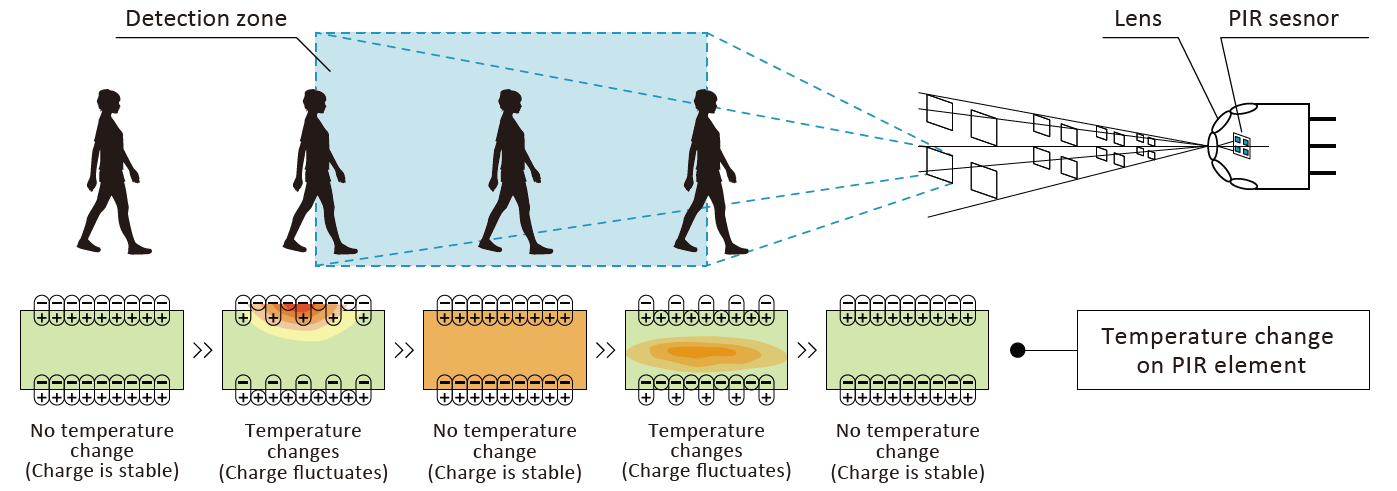
Benefit of solar street light with motion sensor or PIR sensor
Energy saving
Solar street light with motion sensor automatically adjusts to the ideal brightness when they detect someone entering the lighting area covered by the lamp, and once the area is clear, the light returns to a pre-set lower brightness. This cleverly balances energy use without endangering public safety. This adjustment method of solar street lights can reduce unnecessary energy consumption when no one is around, making limited solar energy (stored in batteries) more useful at night. This operating mode of solar street lights can also reduce the amount of discharge each night, avoiding deep discharge of the lamp and delaying the lamp’s endurance (long autonomy days).
Reduce light pollution
Solar street light with motion sensor reduces the output of lamps during non-essential times to avoid strong light all night that disturbs residents’ sleep. At the same time, outdoor lamps equipped with dimming (such as motion sensors, timer dimming or smart control) are also in line with the requirements of the International Dark Sky Association (IDA, and What’s IDA?), which is very helpful for recalling the dark sky and reducing the impact on astronomical observations. Solar street light with motion sensor or PIR sensor can also completely cut off output, thereby reducing the impact on wildlife, such as reducing insect phototropism and bird navigation interference.
Reduce the configuration of solar street lights
Solar street light with motion sensor can realize on-demand power supply. When someone passes under the light, the light is recommended to work at 100% power, while when no one is there, it can work at 50% or even lower power (20% the default setting of ZGSM’s PV5). This makes the power consumption of the light all night only 50% or less than that of conventional solar street lights, so the configuration requirements of solar panels and batteries are significantly reduced. For example, ZGSM’s PV7 series 50W split solar street light (ZGSM split solar street light solutions) requires 200W solar panels and [email protected] batteries. When equipped with microwave sensors, only 100W panels and 36Ah batteries are needed to meet the demand. After preliminary calculations, the cost of batteries and solar energy is reduced by about 40%, and the cost of the entire system is reduced by about 30%. In addition, the low battery consumption after being equipped with microwave sensors can avoid deep discharge, thereby delaying the life of the system, lowering long-term maintenance costs, and better overall economic performance.
ZGSM suggested solution for solar street light with motion sensor or PIR sensor
Go with solar street light with motion sensor or PIR sensor?
The motion sensor is triggered by detecting the movement of objects, so it is inevitable that false alarms will be caused by non-target movements such as wind blowing leaves and small animals. Since the motion sensor does not rely on thermal radiation, it can still work stably in extreme high and low temperature environments. In contrast, the passive infrared sensor (PIR) is based on the detection of thermal radiation. It can effectively filter out the interference of inanimate objects (such as leaves, wind) and some cold-blooded animals, and the probability of false triggering is relatively low. However, its sensitivity will be affected by the ambient temperature. Extremely high temperatures will cause interference from background thermal noise, while low temperatures will weaken the infrared signal emitted by the human body, which will reduce the detection distance or response speed of PIR. If you need to improve the reliability of detection, dual-technology sensors (PIR and motion sensor combined) are recommended, because combining the advantages of both can reduce false alarms. Btw, motion sensor can be used together with smart control, read Motion detector street lights to find more.
Timer dimming and motion sensor/PIR sensor
Although dual-technology sensors are good, their cost is also very high, and the cost-effectiveness of using them in solar street lights is not high. In practical applications, ZGSM recommends using timer dimming and sensor together. A typical case of ZGSM is as follows. After purchasing the sample, the customer reported that the sensing distance of the lamp was too short and could not meet the lighting needs under high traffic. According to the customer’s description, the corresponding road section has a large traffic and pedestrian flow from 18:00 to 21:00, and there is basically little traffic from 21:00 to 24:00, with a medium pedestrian flow, and there is basically no traffic after 24:00. Based on this information, ZGSM recommends the solution of using timer dimming and sensor together. At 18:00-21:00, disable sensor, that is, the lamp works 100%; at 21:00-24:00, turn on the timer dimming, and set the power to 60% with people under solar street light and the power to 30% when on one passed by; and in the last time period, set the power to 40% with motion detected and the power to 20% without motion detected. This solution not only ensures sufficient lighting during peak hours (before 21:00), but also achieves intelligent energy saving during off-peak hours (after 21:00), which is more practical than the more expensive dual-technology sensor solution. The above dimming level and time period can be selected according to user needs. Contact ZGSM for more information.
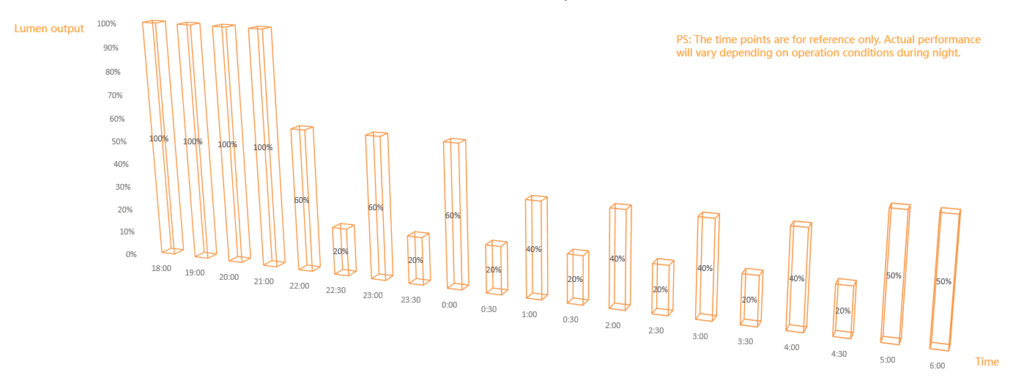
Installation precautions
Microwave sensors use microwave radiation, which can penetrate a certain thickness of glass, wood or plastic, but metal can block and reflect microwave signals. When installing, we recommend staying away from metal surfaces, especially not blocking the direction of microwave emission. Second, the sensitivity of microwave sensing is also related to the speed and size of the moving object. It is not recommended to install solar street lights with motion sensors on roads with high speeds. Third, the installation height and angle of the lamp also affect the size of the sensing distance. The ideal installation height is 5-9 meters. The second and third points above also affect the sensing distance of the PIR sensor. Unlike microwave sensors, changes in ambient temperature have a greater impact on the sensing sensitivity of PIR sensors. The ideal operating temperature is 20-30℃, so it is not suitable for some extremely hot areas such as the Middle East. It should be noted that PIR also senses moving people and is more sensitive to tangential motion. Therefore, the angle of installation of PIR sensors needs to be considered in some indoor applications. Microwave sensors are not affected by temperature, but wireless signals, such as WiFi, 4G signals, Bluetooth, etc., if the sensing distance is short, check whether such signals exist near the microwave sensor.
ZGSM solar street lights with motion sensor or passive infrared sensor
As a professional manufacturer, ZGSM provides customers with high-quality solar street lighting systems to choose from. These lamps can be equipped with motion or PIR sensors, and ZGSM can customize the corresponding dimming curve for customers to meet project requirements. At the same time, we have a professional design team who can calculate the configuration of solar street light systems according to customers’ road conditions, lighting requirements (Road lighting standard) and local sunshine and rainy days. The pictures below show our product range, click on the corresponding picture link to get more details about ZGSM solar street light with motion sensor or PIR sensor.
Summary
Solar street lights with sensors are an energy-efficient smart lighting solution (ZGSM smart street lighting solution), especially suitable for areas with insufficient grid coverage or high installation costs. It consists of solar panels, batteries, LED lamps and controllers, and adding motion sensors (microwave or PIR) can further optimize energy consumption. Microwave sensors use the Doppler effect to detect moving objects, with strong penetration but possible false triggering; PIR sensors use infrared thermal radiation to sense human bodies or vehicles, with better anti-interference but affected by temperature. Both have their advantages and disadvantages: motion sensors adapt to extreme environments, while PIR sensors have a lower false alarm rate and performance degrades in extremely high or low temperatures. Solar street light with motion sensor or PIR sensor has many advantages, such as energy saving and consumption reduction, reduced light pollution, and extended life (What’s the lifetime of LED lights?). Sensors with intelligent power mode can avoid deep discharge of batteries. ZGSM’s solution shows that combining sensors can reduce costs by 30% while improving system reliability. In practical applications, ZGSM recommends selecting sensors based on scenarios: the sensing function can be turned off in high-traffic areas, and timer dimming can be enabled during low-traffic periods (such as setting different lumen output in stages at night). When installing, please note: microwave sensors should be kept away from metal shielding, PIR sensors should be kept away from high temperature environments, and the installation height (5-9 meters) and angle should be adjusted to optimize the sensing distance. In addition, dual-technology sensors are more expensive and less cost-effective than the combination of “timer dimming + motion sensor/PIR sesnor”. In short, solar street light with motion sensor achieves efficient energy saving while ensuring lighting needs through precise sensing and scientific configuration, making them an ideal choice for sustainable urban and rural lighting.
Related Products
Related Blogs
Related Cases
People also ask
Author introduction

Hello Customers,
My name is Taylor Gong, I’m the product manager of ZGSM Tech. I have been in the LED lights industry for more than 13 years. Good at lighting design, street light system configuration, and bidding technology support. Feel free to contact us. I’m happy to provide you with the best service and products.
Email: [email protected] | WhatsApp: +8615068758483

